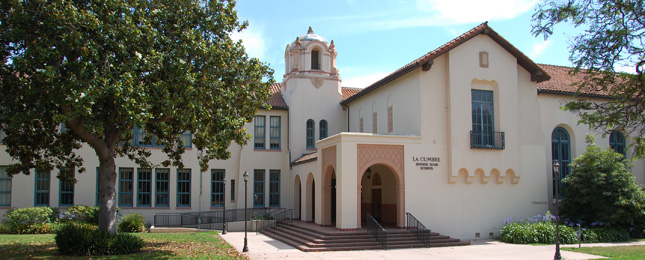Supportive parents and staff are rallying behind embattled Harding School principal Marlyn Nicolas, but her future is still up in the air. As of right now, she is still principal, and according to her husband, Frank Nicolas, her preference is to stay.
Her future was apparently discussed in closed session at the July 12 board meeting, but according to Board of Education president Lynn Rodriguez, it will not be decided until July 22 whether the matter will even be on the agenda for the board’s next meeting on July 26.
“We have potentially an item on the agenda next week but that’s not certain yet,” said Rodriguez, who is also a Harding parent, a situation she said has been uncomfortable given the current rumors surrounding the school’s principal. “It’s tough, because especially in elementary school, there’s such a connection between the parents and the school and the staff, and it can be very uncomfortable. … I personally in this situation, especially since I am a parent at the school and have been for seven years, am trying to sort of leave it to staff as much as possible. They have the expertise more than I do about principal performance issues.
“But I can unequivocally say that the principal at Harding is very well liked. … It’s an extremely hard situation. I think it is good for the public because I don’t think people really understand a principal’s job duties, what they’re really supposed to do and how they are evaluated and how they are held accountable because it does take more than being a nice person to be an effective principal,” said Rodriguez.
Harding teachers have speculated that the discussion of removal of their principal was based on an evaluation they filled out last month out about Nicolas’s performance, at the request of Assistant Superintendent of Elementary Education, Robin Sawaske.
“We were under the impression that our comments would be used to help her, not to remove her,” teacher Jeanette Pinedo told the board. Other teachers who did not want to speak on the record echoed that sentiment.
Sawaske is on vacation this week, and unavailable for comment,
When asked about the district’s principal evaluation procedures, Rodriguez said she thought evaluations had been done on a regular basis in the past, but with turnover in staff (Sawaske is the fourth person to hold the assistant superintendent position since 2002) ” I think it’s been a little spotty.” She added, “In common practice, well in our district anyway, the Assistant Superintendent for Elementary Education oversees the principals, meets with them regularly, and good practice would say that they get an evaluation every year.”
Principals have annual contracts and typically if it is not going to be renewed they are told in March, in order to allow the principals, many of whom have teacher tenure, to reapply for classroom positions. Layoff notices must legally be given to teachers by March 15, which would have been the case if a principal with more seniority were to bump them, according to Rodriguez.
Mr. Nicolas said his wife has been in the district for 31 years, and at Harding School for 27 years, first as a teacher and for the last seven years as principal.
If her fate is not discussed in closed session at the July 26 board meeting (the agenda will be posted at www.sbsdk12.org/board/agenda/index.shtml in the late afternoon on July 22), the next board meeting is not scheduled until August 23, the day staff reports to Harding for duty, with school starting on August 29.
Closed session board agenda items are often vague, for example the July 12 item was listed as “public employee discipline/dismissal/release.”



